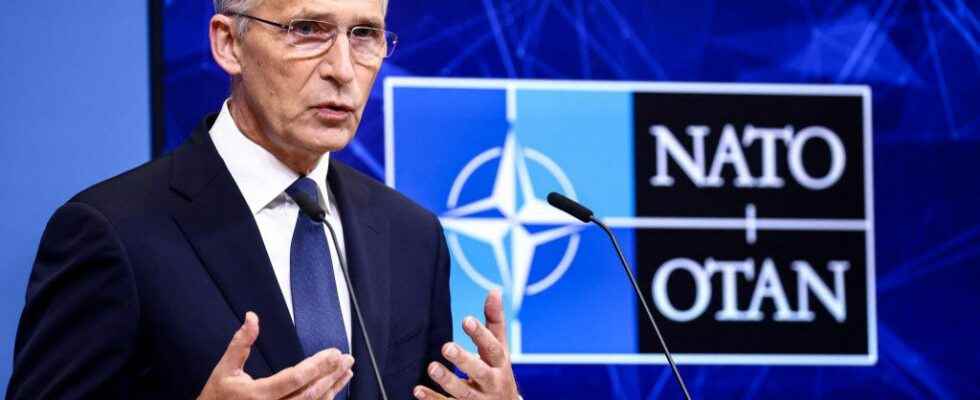In Smardan, a city in eastern Romania, we are preparing for all scenarios – in particular that of a Russian attack. Mobilized in a NATO battle group, more than 600 French and Dutch soldiers took part last month in a live combat exercise involving some 200 armored vehicles, including four Leclerc tanks. The goal? Demonstrate their ability to operate together under the assumption of a high intensity engagement. A very concrete illustration of the reinforcement of the eastern flank of the Alliance, carried out following the Russian aggression in Ukraine. “After almost thirty years of crisis management and out-of-area deployments, we are witnessing a return to fundamentals for the Alliance, underlines Camille Grand, former Deputy Secretary General of NATO, now a researcher at the European Council on Foreign Relations. This conflict has put NATO back at the center of the game on European defense and security issues, its core business.” And the original mission of this alliance, founded in 1949 to protect Europe against Soviet expansionism.
Its new “strategic concept” – a document supposed to guide its action for the years to come – announces it clearly. “The Russian Federation constitutes the most important and most direct threat to the security of the Allies and to peace and stability in the Euro-Atlantic area”, details the text adopted last June in Madrid. In the aftermath, the allies announced a range of measures, presented by NATO Secretary General Jens Stoltenberg, as “the biggest overhaul of our collective defense since the Cold War”. Among them: increasing the Alliance’s Rapid Reaction Force to more than 300,000 troops, up from 40,000 currently. Then, transform the eight battalions positioned on its eastern edge into brigades, that is to say increase them, in the long term, from 1,000 to 3,000 people, or even 5,000. According to the last tally carried out in November, the presence ally in the Baltic States, Poland, Hungary, Slovakia, Romania and Bulgaria amounts to 10,232 soldiers.
Turbulent period
The Alliance has come a long way. Diagnosed in a state of “brain death” by Emmanuel Macron in 2019, she had to compose in recent years between growing doubts about the reliability of American commitment during the Trump presidency and multiple turbulences. Evidenced by the blows of the chin of the Turkish President, Recep Tayyip Erdogan, and his purchase of Russian anti-aircraft systems S-400, or his provocations in the Mediterranean against Greece, yet a member of NATO since 1952 – like Ankara. A black series concluded by the withdrawal from Afghanistan without consultation of American troops, in August 2021. “At the time, the French president had said out loud what the others were formulating in low voice, recounts a European diplomat close to NATO . This is no longer the case today.”
Despite himself, the Russian president is no stranger to it. “By reminding all member states that Russia constitutes a major threat, Putin has paradoxically been the best promoter of the Alliance, abounds Samantha de Bendern, researcher at Chatham House and former political officer at NATO. Today , no one questions its importance for European security.” Conversely, the conflict even prompted Sweden and Finland, two historically neutral states, to ask to join it last spring. If the accession of the first remains suspended with the authorization of Turkey, far from being acquired, the second could see its request satisfied soon.
Reinforcement in progress
“Finland is a small country, but it could make a significant contribution to common defence, notes Amélie Zima, researcher at the Institute for Strategic Research at the Military School. Europe.” With more than 600 howitzers and a hundred multiple rocket launchers, Finland has one of the best endowed land forces on the Old Continent. According to Helsinki, its army could, moreover, reach 280,000 soldiers in wartime and rely on 900,000 reservists.
With the announcement of increased military reinforcement in many European countries – Poland and Germany in the lead – the Alliance should be able to sharpen its weapons. “The rise in power of the NATO countries thanks to large military investments will produce real effects, underlines Camille Grand. But these efforts must be part of the long term.” At the Madrid summit, the allies pledged to devote at least 2% of their GDP to defense by 2024. A level that only nine of the Alliance’s 30 members reached in 2022. “This war is out of proportion, but it is real and we must face it, summed up in early January, during a conference in Sweden, General Christopher Cavoli, Supreme Allied Commander Europe. it is better to have a tank to oppose him…”
